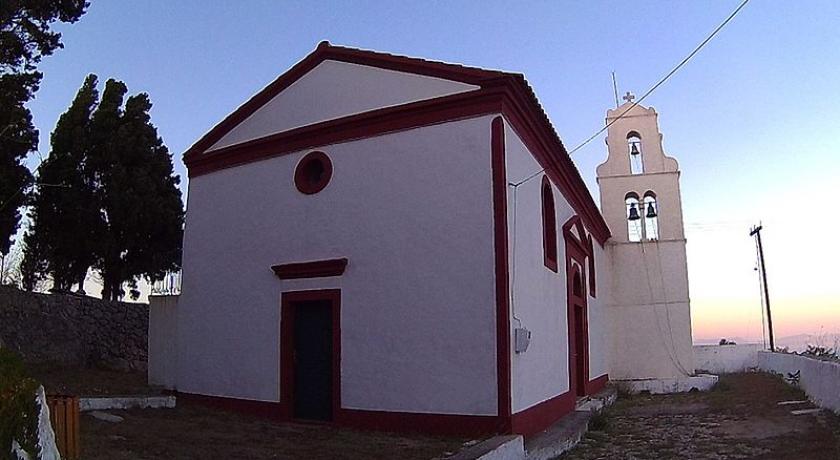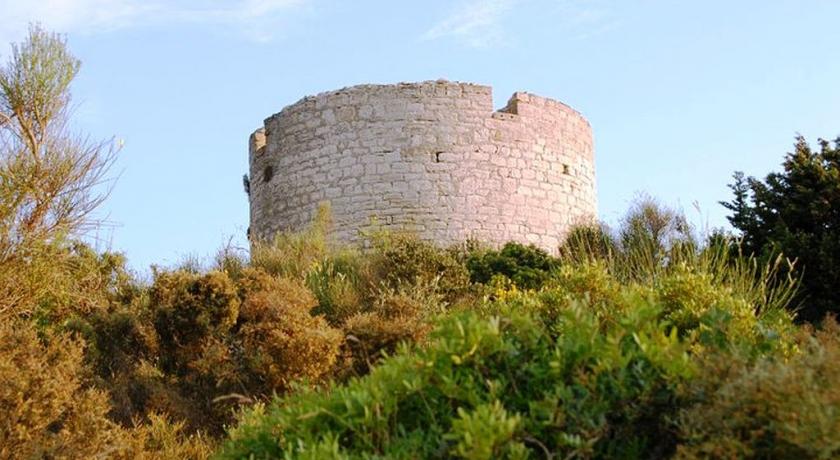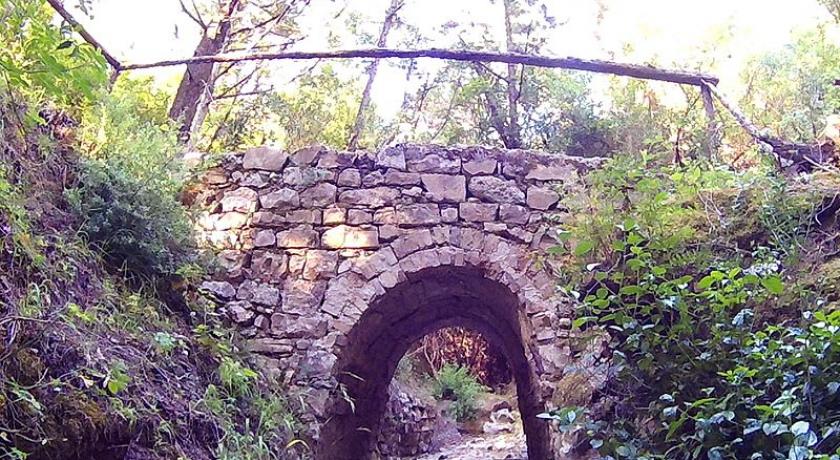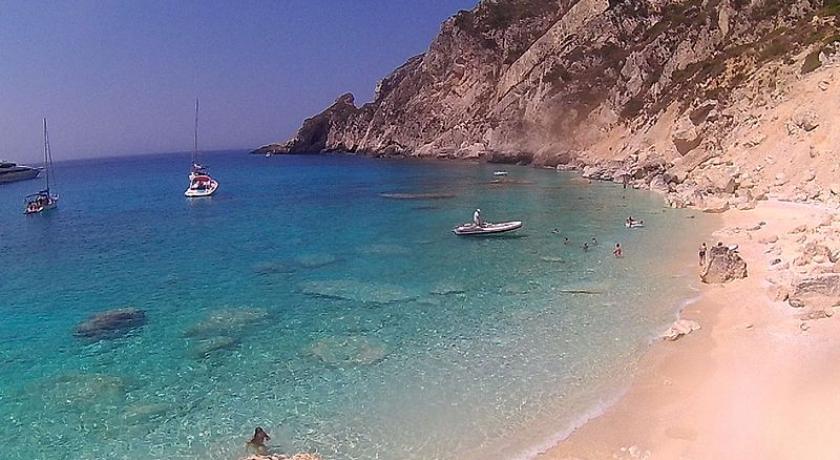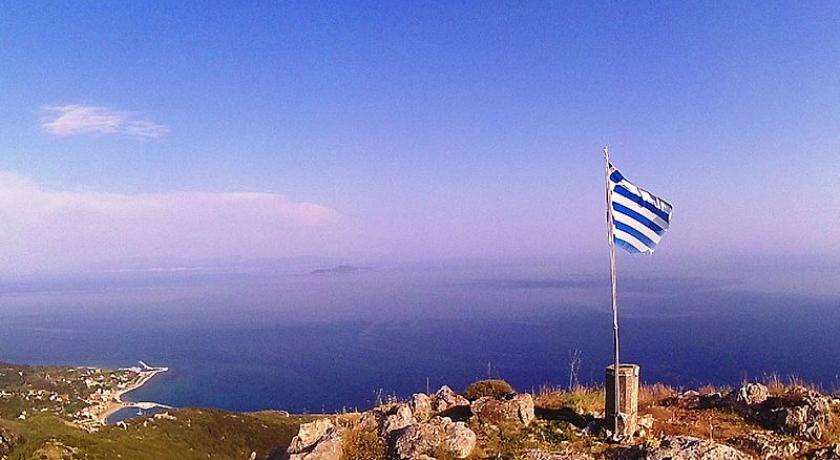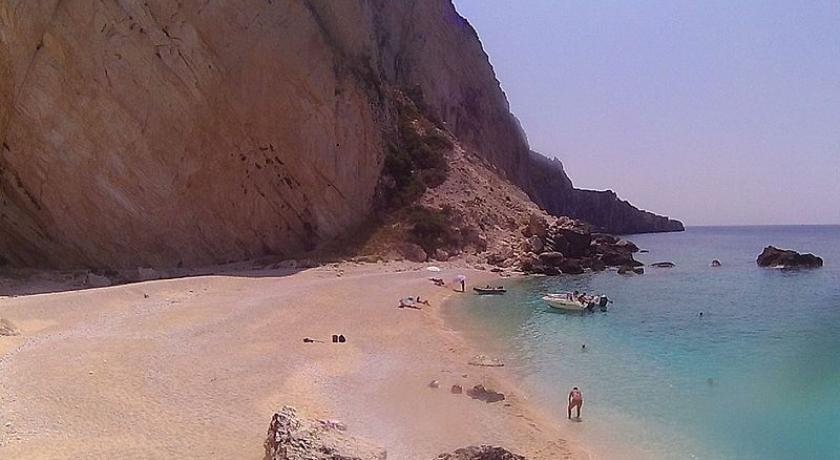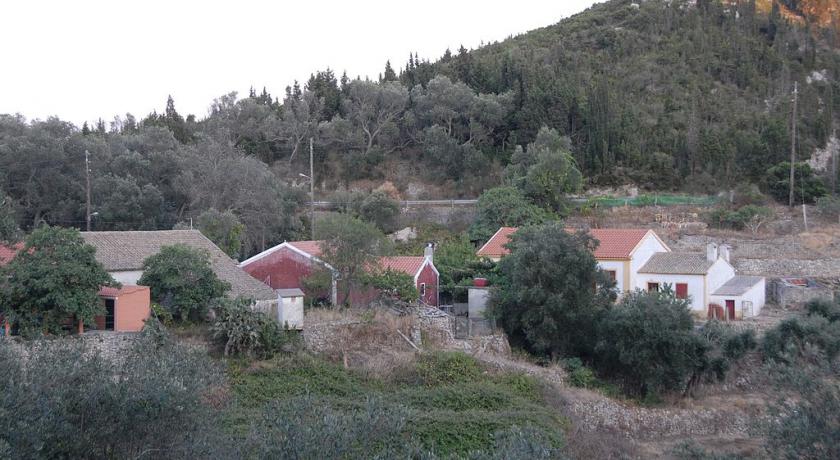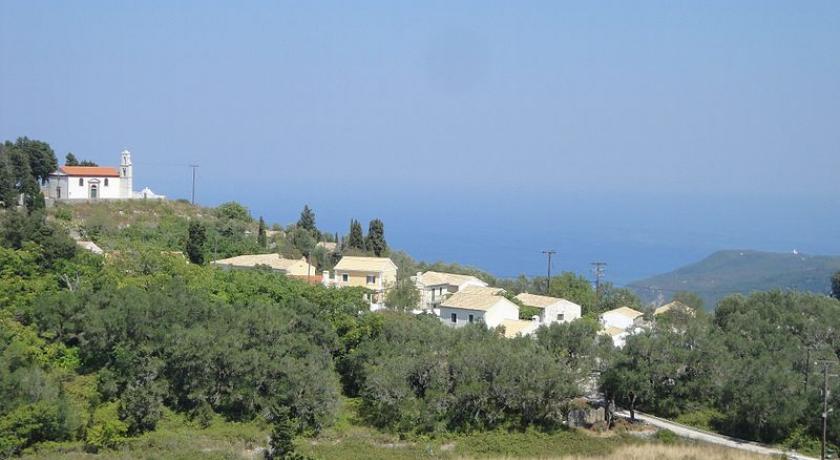Description
Othonoi or Othoni (Greek: Οθωνοί, Italian: Fanò or Othoni) is a Greek island and the westernmost point of Greece. It is a former community of the Ionian Islands. Since the 2011 local government reform it is part of the municipality of Corfu, of which it is a municipal unit. The municipal unit has an area of 10.078 km2. It is located northwest of Corfu. Population 392 (2011). It is the biggest of the Diapontia Islands and it is divided into two regions (Ano Panta - Kato Panta). In the 19th century the island was the capital of the Diapontia Islands municipality, which also included nearby islands of Ereikoussa, Mathraki, islets and rocks of Diakopo, Diaplo, Karavi, Kastrino, Leipso, Ostrako, Plaka, Plateia and Tracheia. Othoni is about 47 n.miles from Santa Maria di Leuca cape, Italy.
Name
The first name according to ancient texts (Hesychius, 3rd cent. BC) was "Othronos" (Οθρονός), "Othronoi" (Οθρωνοί) and by Procopius seams to be "Othoni" (Οθωνή) (6th c.). According to Pliny (1st cent.) was "Thoronos" (Θόρονος). Other names were "Fidonisi" (Snake island) because of the many snakes that are said to have invaded the island, and "Fano" (Lamp) which is used in international charters and by the Italians because of the lighthouse that it is on the island. There are also views that came from the word "screen" (Greek:Οθόνη) as "Othones" seems that the local seamen call the sails of their sailing boats.
History
At the beginning of the second millennium, the island was conquered alternatively by the Franks (the 11th century) and the Venetians (12th century), and often attacked by pirates of Barbary and Algeria. From the end of 1383 until 1386 the domination of Corfu brought by Charles III of Naples. In his letter he stated that on April 19, 1383 granted the usufruct of Othoni Ereikoussa, Mathraki, Diapolo and Vido, the knight Theodore Skaliti as fief. In 1537, the Turkish fleet under the command of Greek origin pirate and admiral Hayreddin Barbarossa massacred the inhabitants of Othoni island after a long battle. In Stavros district at an altitude of 217 m. a white stone cross exists until today to commemorate that event.
The last settlers of Othoni apparently came from Paxos and Ioannina, Parga and the region of Epirus. Dated after the Battle of Nafpaktos in 1571,when the Turkish fleet was destroyed and the islanders began to move more safely. After the last movement, the residents of Othoni island colonized the two other small islands, Ereikoussa and Mathraki. In 1815, the English conquered Othonoi and as is said, sent to the island sick soldiers to recover because of the good climate that prevailed. The Treaty signed on March 29, 1864 between the three powers (England, France, Russia) and the Kingdom of Greece, the Ionian Islands -and Diapontia islands- passed definitively to Greek sovereignty on 21 May. On October 5, 1864, the Ionian Parliament realized the purpose of the convocation solemnly acting union with Greece one and indivisible state under the king, George I of Greece. From 1869 until 1912 Othoni, Ereikousa and Mathraki formed the municipality of Dimos Diapontion with Othoni as capital.
Othoni have achieved big naval and maritime history as men crowd the island and the surrounding islands were involved in shipping (1880-1990). It is significant that there is no family without a sailor. Also, many Othoniotes were senior crews in war ships. Main maritime occupations was sailor, boatswain, master or engineer of any class etc. A lot of Othoniotes were ship owners as they had a large number of yachts and commercial steamships traveling to many Mediterranean ports. Unfortunately, within these decades of history that wrote Othoniotes at sea, there were some victims because of several wrecks due to sloppiness and carelessness of those responsible in the last century.
Sinking of submarine Protefs
On 29 December 1940, the Greek submarine Protefs sank in the sea area of Othonoi. The submarine had attacked an Italian convoy carrying ammunition to Vlorë. After sinking the steamer Sardegna, the submarine was rammed by the Italian torpedo boat Antares. The loss of the submarine was the first loss of the Greek Navy in World War II. A monument to honor the memory of the crew, was inaugurated in Othonoi on June 15, 2015.
Mythology
According to a legend, in the ancient times it was the island of nymph Calypso, who lived in a large cave. Odysseus fell in love and remained like a prisoner there for seven years. Homer called thιs island Ogygia. Due to his scriptures there was a strong scent of cypress on Ogygia island. Othonoi is a place with many of these trees. Odysseus left the island by a raft and he sank on Scheria the island of Corfu . This is an extra element that justifies the legend of Othonoi being Ogygia, because of the short distance that separates the two islands. According to Hesychius, after the Trojan War, Elephenor, king of Avantes from Euboea fled to the island after the fall of Troy, to atone as he had killed his grandfather, Abas.
Economy
Most Othoniotes (local dialect: Thoniotes) have migrated to Corfu, Athens and abroad (especially to the USA) because of the unemployment and few exploitable resources (1900-1960).The main work was the olive and oil production. Most men of that time were involved in nautical professions (sailor, bosun, carpenter, captain, skipper etc.) and worked on commercial and war ships which were operating in every part of earth. Main occupation of current residents is tourism, fishing and olive production. Previously there has been significant cultivation of vines, the beekeeping and livestock.
Settlements
Othoni is divided into two regions which are Ano Panta (Greek: Άνω πάντα) and Kato Panta (Greek: Κάτω πάντα). There are more than 20.
Main sights
Churches
- Holy Trinity church (Greek: Εκκλησία Αγίας Τριάδος) (1892) at Ammos.
- Virgin Mary church (Greek: Εκκλησία Παναγίας θεοτόκου) near Stavros district.
- Saint George church(Greek: Εκκλησία Αγίου Γεωργίου) (about 1864) at Chorio.
- Agia Paraskevi church (Greek: Εκκλησία Αγίας Παρασκευής) (and the old stone mill) at Damaskatika.
Other buildings
- School of Othonoi (Greek: Σχολείο Οθωνών) (1912) at Ammos.
- Ruins of the Venetian fortress at the northeast end of Kastri cape hilltop at an altitude of 100 m.
- Lighthouse of Othoni (Greek: Φάρος Οθωνών) (built in 1872).
Monuments
- Cross monument at Stavros, for the massacre of the inhabitants of Othoni by the Ottoman fleet under Hayreddin Barbarossa in 1537.
- Monument to seafares of Othoni island, at Ammos.
- Monument to submarine PROTEUS, at Ammos.
Nature
- Aspri ammos beach (Greek: Παραλία Άσπρη άμμος) which is accessible only by boat to the west of the island.
- Cave of Calypso (Greek: Σπήλαιο Καλυψώς), near of Aspri ammos beach.
- Mount Imerovigli (Greek: Όρος Ημεροβίγκλι) and the highest peak of the island with height of 395 metres (1,296 ft)
- Kamara (Greek: Καμάρα) near Ammos.
- Iliovasilema (sunset) at Chorio.
Beaches
Most beaches on the island are accessible by boat, including Ammos, Molos, Kamini, Kanoula, Kontoskes, Rogi, Fyki, Xilosermi, and Aspri Ammos. It is a well known island for underwater photography because of the peculiar geomorphology of the seabed and the many caves. Other points of interest are the Moshopontikas, Xylosermi, Fyki bay (where there is the sunken wreck of Sarah ship). Othoni was frequently visited by the French naturalist Jacques Cousteau and his exploratory vessel Calypso.
Trails
The traditional trail was created and used by the first inhabitants, and was subsequently reopened by the municipality and private initiatives. Locals and visitors can use the trail to reach almost every neighborhood and part of the island on foot, as well as Mount Imerovigli (Merovigli), and the highest peak of the island, with a height of over 390 metres (1,280 ft), with views of the other Diapontia Islands, Ionian sea and Adriatic sea.
Others
- Port of Ammos (Greek: Λιμένας Άμμου) is the most populous district with small guesthouses, restaurants, rent-a-bike store, cafes, police station, community clinic with ambulance and port authority.
Nature
Flora
The island is almost completely covered by trees which produce a small species of olive, the "Elea the cherry" (Olea microcarpa), commonly Lianolia or ladoelia, with a high content of high quality oil, which is common in all the Ionian Islands. It was densely planted during Venetian rule, so most are aged 300–400 years exceeding a height of 7 metres (23 ft). There are cypresses and fruit trees on almost all mountain slopes. The tall mulberry (or Skamnia) and fig (or Skeria) are found in nearly all districts and gardens that host many species of fruit and vegetables, and features large cabbage called by Othoniotes cramps, as in Cyprus. Most houses have, instead of tents or sheds, pergolas with vines or pergoulies. Oregano, sage and many other herbs.
Fauna
Othoni is the first migratory bird station in southeastern Europe from Libya, especially for turtle doves. There are also grouse and snipe (xilokotes) during the winter months, and Petritis falcons, the European bee-eater birds, martins, ravens and several species of eagles. There are several hares and rabbits. The most common species of reptile is the viper (Vipera ammodytes or astritis). Marine mammals have been observed off the island's coast, including the bottlenose dolphin, at least three species of sharks (including white shark), while sporadically near the cave of Calypso there have been monk seals. also found almost all varieties of marine fauna, such as the white sea bream, red mullet, the snapper, the grouper, the bumpkin (weighing up to 30 pounds), octopus, moray, the stingray, lobster. Remarkable is the presence of barnacles and sea urchins. Zooplankton is in small coves of the island and especially in seaweed is abundant at night, and when the sea is calm, the plankton illuminates the sea bed.
Climate
The climate of Othoni is mild, and generally warm and temperate. The winters are rainier than the summers in Othoni. The Köppen-Geiger climate classification is Csa. The average temperature in Othoni is 16.7 °C. About 1026 mm of precipitation falls annually.
Dialect
A dialect is spoken resembling that of Corfu and having a similar prosody. It is heavily influenced by Italian.
Transport
The island is accessible by boat with regular services from Corfu port and Agios Stefanos Avliotes. There is a port in Avlakia district (with fishing port), for several small private yachts and boats.The island has a heliport for emergencies. Asphalt roads are available on many parts of the island, about 12 kilometres (7.5 mi) of which are extended to settlements. There is complete electrification and a telephone network with Internet access.
Adresse
Othonoi
Grèce
Lat: 39.841793060 - Lng: 19.406446457


